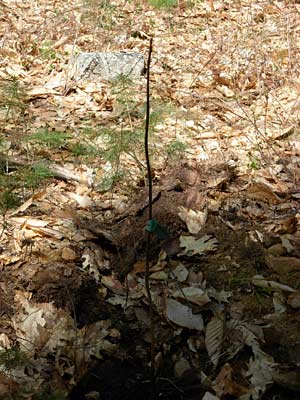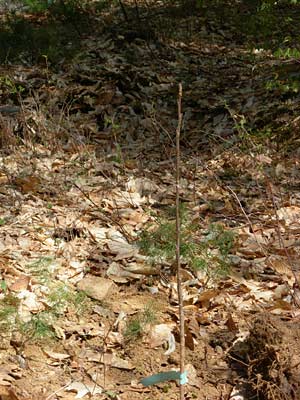The trees went in mostly in priority order.
First, a Gala apple. I like Gala apples from the supermarket, and my book on growing apples says that fresh locally grown Galas are way better than supermarket ones. Certainly I like my homegrown Red Delicious apples better than supermarket ones. So, even though it’s all we can do in September and October to keep up with the apple trees we already have, I put in a dwarf Gala. I followed the planting instructions, digging a nice deep, wide hole, spreading out the roots, and tamping the soil down carefully.
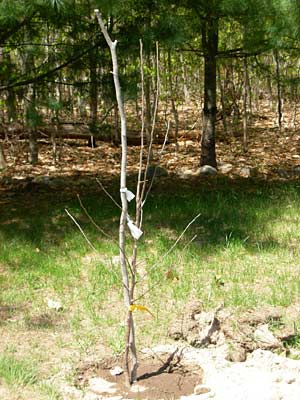
Second was an Orange Quince. We get a few quinces, and lots of beautiful red-orange flowers, from a small quince in Newton. I’d like to have more of the fruit. This was a pretty tall tree, about five feet, with plenty of roots. It got a good-sized hole too.
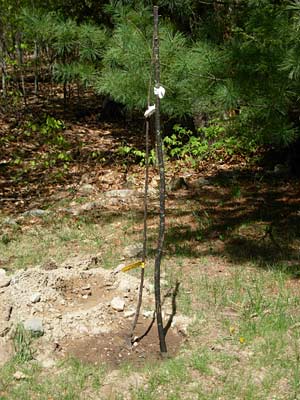
Next was a Collette pear. The pear trees I put in last year were buried in snow when I placed the nursery order. I wasn’t the least bit confident that more than two of the four would have survived, so I ordered another for a replacement. I was still doing a good job with the holes at this point. Just as I had finished putting the tree in the ground and patting the soil down around it, Arlene said, “There’s something big flying over. I think it’s a vulture. Wait! No! It’s an eagle! Sure enough, it was a bald eagle.She got a clear look at the head and tail before giving me the binoculars, and I got enough of a look at the tail to be sure of the ID. I went back to the pear tree, placed my hands on it, and said, “I dub thee Eagletree.” If the eagle knew, it would say, “pffft, that’s not a tree, that’s a piece of nesting material.”
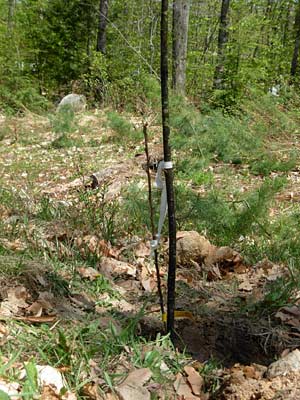
Oh, by the way, notice those stakes holding up the baby trees? Earlier in the day I had walked up to Sleeping Rhino to case out planting sites near it (decided against it) and to cut saplings for stakes, because I’m trying to open up the view around the rock anyway. As I was bending down clipping bramble canes on the path, I heard some noise in the leaves. I looked up and saw a hen wild turkey about 20 feet away. Just a single turkey. Usually we see more than one at a time.
After those three trees I was a third of the way done with the job and ready for a break. We drove to Raymond to check out a community yard sale at the elementary school. We came home empty-handed.
The remaining trees were walnuts. They’re supposed to grow to be big, impressive trees. The nursery stock was far from it. I had four little sticks with roots to put in. Actually, that suited me fine, because I wasn’t going to have to dig such big holes as for the fruit trees.
I put in two Carpathian Walnuts on the far side of the runoff from the well. They’re long-term investments, not going to bear nuts for five years or longer.
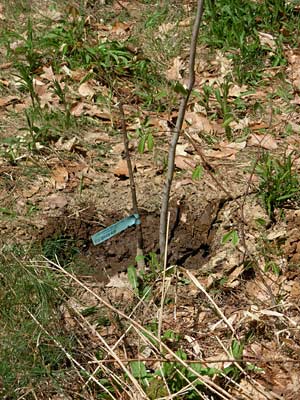
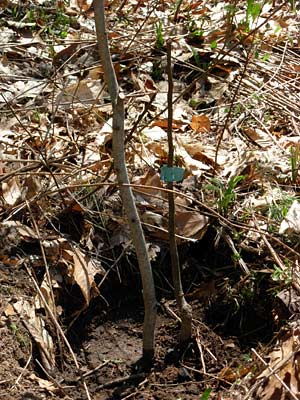
Then two Thomas Black Walnuts, a cultivated variety that’s supposed to give plenty of good nuts for baking, and are supposed to start bearing much sooner than the Carpathians.
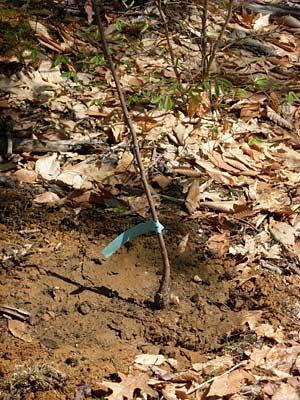
One of the Thomas Walnuts looked questionable. I’m not positive I got good value from the nursery on this one; there were barely any roots, and the whole thing was about two feet long. I’ll be pleasantly surprised if the tree establishes itself. You’re supposed to have two of the trees for pollination, but I’m pretty sure the native black walnuts will do for that.
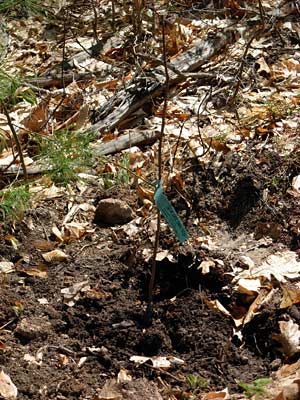
Then two native Black Walnuts, that the nursery catalog was pushing for growing for lumber and shade. If they yield nuts that the turkeys and grouse like, so much the better; but if one of the Thomas trees bears nuts, that’ll probably be enough of them for me. These were inexpensive. Maybe I’ll stake them later.
